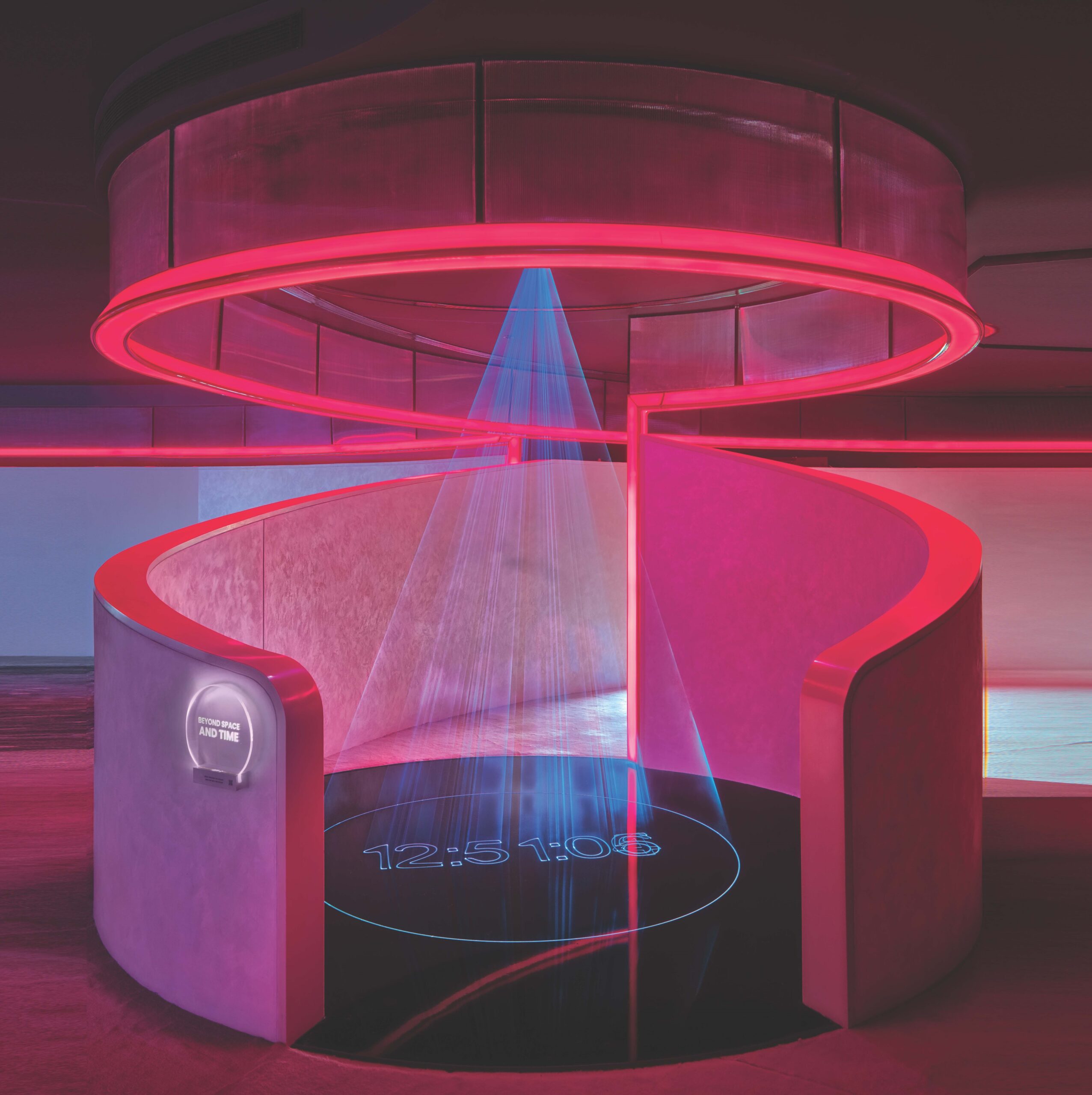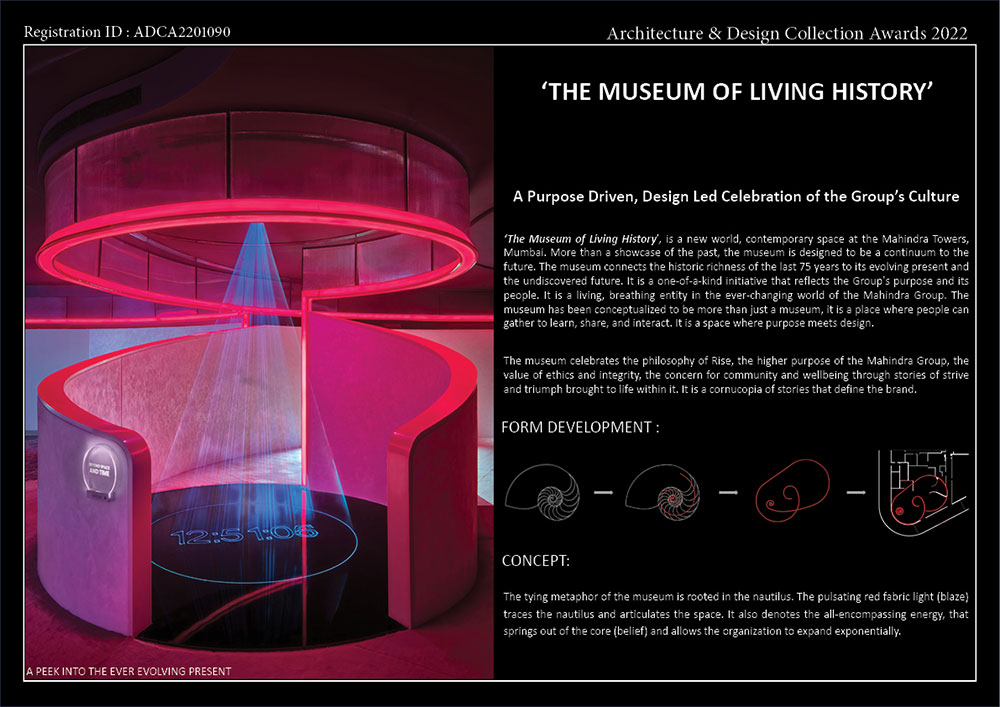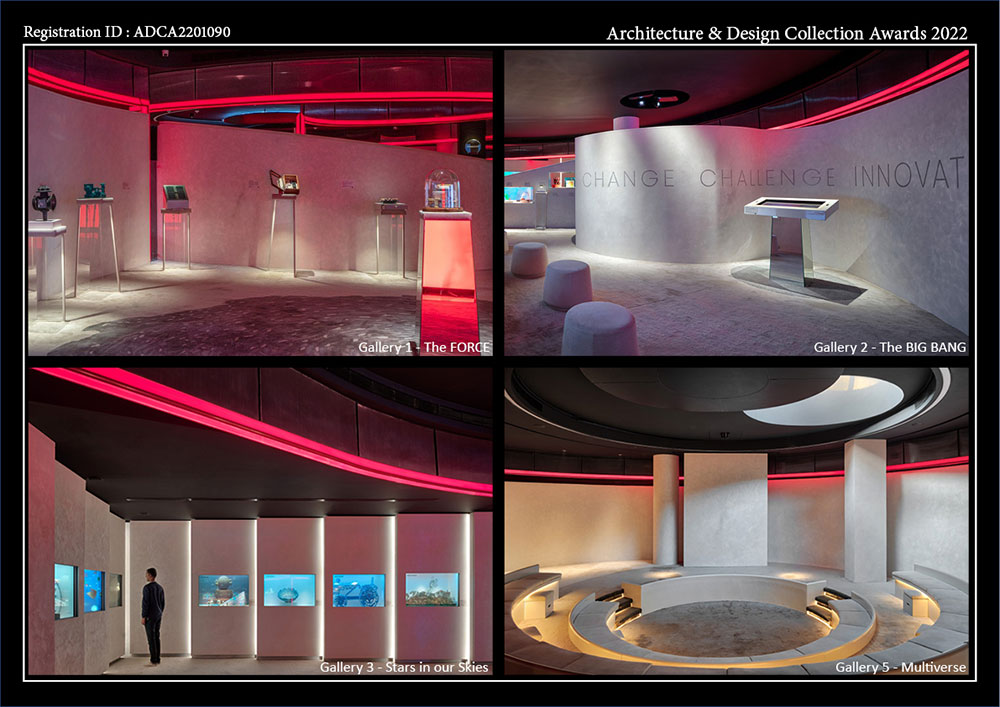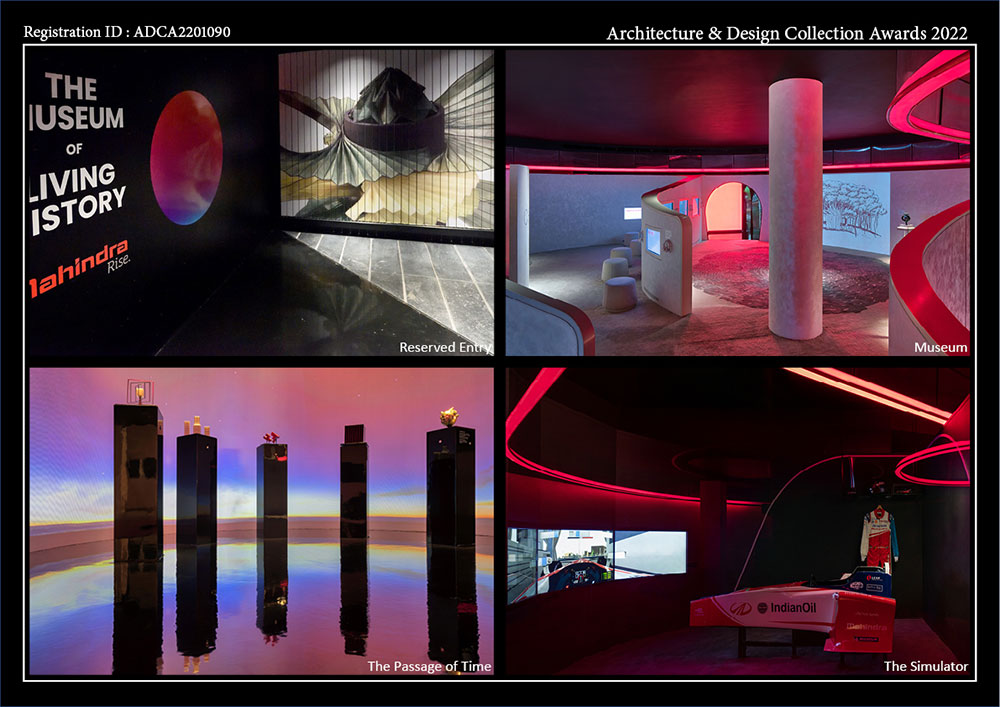Architect / Designer:
Studio:
Design Team:
Research team – Mansi Sood, Shivangini Dasgupta.
Copyright:
Country:
The big idea:
The Museum of Living History, a timeless piece of experience-centered design, is the pulsating heart of the brand Mahindra.
Spatial narrative has been carefully curated and is manifested through 4 mediums such as installations, films, objects and digital experiences. The mediums have been curated to add depth to the stories and can be updated continually.
The narrative is governed by researched & curated stories, which then became a brief for artists. Acclaimed artists, artisans, digital creators and filmmakers were carefully chosen and briefed over a prolonged period to fine-tune the stories that they were translating, adding their personality to the final exhibit. Each artist in his/her unique interpretation recreated the ethos of the story in the medium of their respective expertise.
Thus, instead of being a just repository of important artefacts, this museum takes a different route in narrating the brand story. It presents the narrative through specially commissioned art pieces that tell the story of Mahindra’s core values and principles, its various businesses, its rich history, and its outlook toward the future.
Sections:
Built over an abandoned space at the Mahindra towers is a true example of revival of a space back to life.
The segregation of the rich history is showcased in 6 sections. The Force – the force, the philosophy, The Big Bang – Mahindra and India, Stars in Our Sky – the various industries and businesses, Hyperspace – innovation, Beyond Time & Space – breach the present and step into the future, Multiverse – futuristic ideas.
The sections are carefully planned to cocoon the viewer like a warm embrace, a perfect ambience to absorb the message and details of the art within.
Design Detailing:
The plan respects structural constrains. Hence the museum has been designed as a fluid open plan, with galleries that are visually connected. Of notable importance in revival of space is turning a parking lot into a zen garden & repurposing an abandoned water tank into an amphitheater.
The museum is approached through the Zen reflective garden. One enters the museum through an ‘interspace’, a bright red fabric light within a dark reflective space. The interspace acts like a palette cleanser that sets the mood and orients one to the anticipated experience.
The interiors reflect a futuristic space with delicately balanced textures that seem to be in constant motion, depicted through the Banyan Tree, a futuristic ticking clock and objects within the space that move and respond to touch.
The metaphor of progressing spiral/nautilus is depicted through the pulsating red blaze, a fabric light installation that runs through the space tying all the sections together. This ‘blaze’ in a way acts as a navigation tool, without needing to physically segregate the sections. The blaze culminates in the vantage point in the museum, “the present”.
The result is a pulsating, pluralistic narrative that leads the viewers to the facts albeit with their interpretation. it not only personalizes the journey for each visitor, but it also makes each visit and each journey.
figments EXPERIENCE LAB
At figments EXPERIENCE LAB, crafting experiences is a science that blends intention, transaction, and evolution.
Figments is a design & research laboratory, where human experiences are studied, analysed, calibrated, and designed.
Phenomenological and ethnographic research methods constitute the bedrock of all design endeavours in the LAB. These methods reveal ‘the-hidden-in plain-sight’ and inform experience design. Over the years, figments has developed an integrative metric called ‘seaPOETS’. The metric blends diverse concerns like sustainability, economics, sociology and technology. It guides the design in delivering measurable impact by providing a holistic view of the designed experience.










